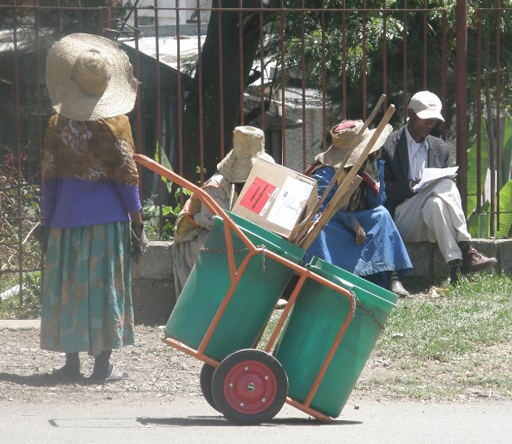13.3.3 Caring for the physical environment improves health outcomes
In Study Session 8, you learned about pollution of the urban environment when human excreta, household waste, animal droppings and other filth collects in the streets. All waste products are sources of disease because they attract rats, mice, dogs, flies and mosquitoes that can transmit infectious organisms to people. Bacteria, viruses and worms in rotting food and faeces are washed by rain into the soil and local sources of drinking water; they contaminate crops and get onto the hands of people working on the land or children playing. Unless hands are washed at critical times, the transmission of infection from soil to hands and into mouths is impossible to prevent. Therefore, keeping the community environment clean and free from waste (Figure 13.9), and persuading people of the health benefits of handwashing and latrine use are key goals for health workers and WASH workers.

In addition to protecting the environment as a way of protecting human health, we should also see the beautiful land, lakes and rivers, animals and plants of Ethiopia as our heritage.
13.3.2 Gender, privacy and access issues influence WASH practices
